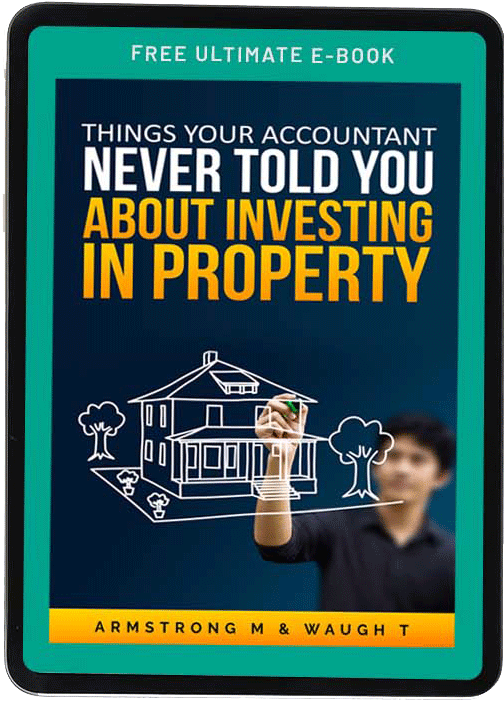What is the 6 Year CGT Rule ? How does it apply to my main residence ?
Once you move out of your main residence there is a rule that allows you to continue to treat this property as your main residence for up to 6 years even though you are no longer living in it. So what is this 6 Year CGT Rule ?
Sounds weird doesn’t it ?
If you do make this choice, it could allow you to reduce any potential future capital on the sale of the property.
This concession is sometimes referred to as the ‘absence’ provision or the ‘6 (six) year rule’ for CGT.
Some people think the rule only applies when moving interstate but it applies whenever you move from your main residence. Even if it is just ‘down the road’
Where someone makes this choice to apply the absence provisions they cannot treat another property as their main residence.
So, if the 6 year rule is applied to your Principal Place of Residence (PPOR) and that becomes an investment property (IP) and you then move into a new PPOR then that new PPOR will be subject to Capital Gains Tax (CGT) at some point in the future.
We have read on forums where some people think that once the 6 (six) years is up and you go over the 6 (six) year period, and you don’t sell the property within the six year period, that the 6 year rule for CGT doesn’t apply at all.
Fortunately, this isn’t true and is merely and urban legend.
If you keep renting the property for more than 6 years, you don’t lost the ability to use the 6 year rule.
Remember it isn’t an up to six years and lose it rule.
You can apply the absence provisions for the first 6 year period for which it was rented and then you will be subject to CGT on the remaining period.
The term election makes people think that there are some forms to fill in or they need to somehow tell the Australian Taxation Office (ATO) that this property is their main residence.
Nothing like that must happen.
You just need to know in your own mind that this is what you want that is adequate. Make sure your accountant also knows so they don’t make mistakes when preparing your tax return.
It’s how you lodge your return that determines the choice you made.
EXAMPLE
Bob and Wendy purchased a home in 2015. They move in immediately and lived in it for 2 years.
They then kept the property, moved interstate, rented a house interstate and rented their home.
They now to sell their house in 2022.
Will they pay tax on the sale ?
Ordinarily Bob and Wendy would be deemed to have purchased their home for the market value on the date it was first used to produce income which was the market value of the property in 2017.
They would ordinarily then pay capital gains tax on the difference between the sales price and the market value of the property when it was first rented.
By using the 6 year CGT rule the property will continue to be their main residence until the sale in 2022 and they will not need to pay capital gains on the sale.
As they have no other main residence (they are renting another property interstate) they don’t need to consider other properties.
Bob and Wendy are happy as they hate paying capital gains tax.
What if I lived in the property and rented out one of the rooms. I then move out of the property and rent it for 4 years before selling. Can I used the 6 year rule to pay no tax on sale ?
Bob and Wendy
It does sound temping. Rent out a room, move out and rent the property and then before the 6 years is up sell the property tax free !!
Unfortunately this isn’t the case.
If you use any part of your home to produce income before you stop living in it, you cannot continue to treat that part of the house as your main residence after you stop living in it.
This means that you cannot get the main residence exemption for that part of the house either before or after you cease living in it.
You will be able to apply the 6 year CGT rule to the portion of the property that wasn’t used to produce income after that income.
EXAMPLE
Johan purchased a house on 1 July 1995 and he and a tenant moved in immediately.
He used 75% of the house as his main residence and the remaining 25% was rented out to Jane.
On 1 July 2019 Johan and Jane both moved out of the property and Johan continues to treat the property as his main residence until it is sold on 1 July 2022.
Johan makes a capital gain of $50k on the sale.
As Johan had rented the property to Jane, 25% of the capital gain i.e. $12,500 will be taxable.
What if I move back into the property again ? Can i use the 6 year rule again ?
Johan
Thankfully the 6 year rule does refresh once you move back into the property.
This means that Johan could move out for 4 years and then move back into the property and make it his main residence for another 3 years and then move out again and rent it for 4 years. Applying the 6 year CGT rule the entire capital gain will be tax free. Good tax planning Johan !!
There is no limit on how many times you can use the 6 year rule.
By applying the six year rule you could get a capital gains tax exemption for the entire period. How cool is that.
If you would like to know more the Australian tax office has published some material on this here
Treating former home as main residence | Australian Taxation Office (ato.gov.au)
Frequently Asked Questions
The 6 Year CGT Rule is a tax regulation that allows you to continue to treat a property as your main residence for up to 6 years after you have moved out of it. This means that if you choose to sell the property within this timeframe, you can potentially reduce or even eliminate the capital gains tax (CGT) that would ordinarily be applied to the sale.
Yes, you can apply the 6 Year CGT Rule to a property even if it’s rented out after you move. The rule continues to apply as long as the property was used as your main residence at some point. However, if you rented out a part of your home while you were living in it, the rule can only be applied to the portion of the property that wasn’t used to produce income.
Yes, it does. The 6 Year CGT Rule is not an “up to six years and lose it” rule. If you keep renting the property for more than 6 years, you don’t lose the ability to use the 6 year rule. You can apply the rule for the first 6 years it was rented, and any remaining period will be subject to CGT.
Yes, the 6 Year CGT Rule resets each time you move back into the property and make it your main residence again. There’s no limit to how many times you can apply the rule, so strategic planning can lead to significant tax savings.
No, the 6 Year CGT Rule cannot be used by non-residents for income tax purposes. The main residence provisions, which include the 6 Year CGT Rule, are not available to non-residents.




